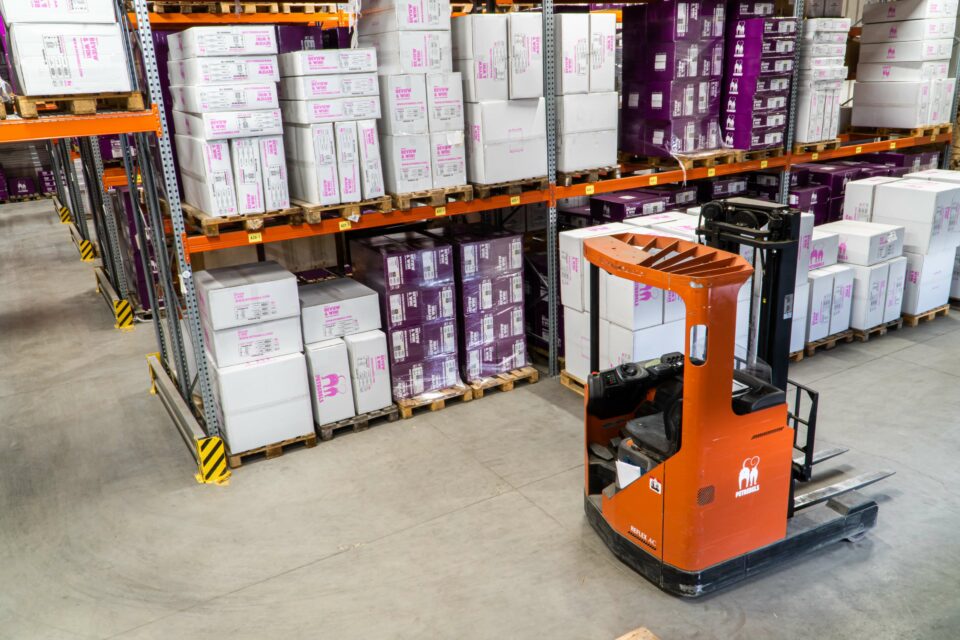
E-Invoicing and Its Geopolitical Stakes
France’s electronic invoicing reform relies on a Y-architecture, where Partner Dematerialization Providers (PDPs) play a central role in issuing and…
Generix Announces the Appointment of Olivier Vaillancourt as General Manager for North America View the press release

The SOLOCHAIN WMS is designed with a goal in mind: to provide supply chain operators a powerful warehouse management solution that offers maximum configuration flexibility and performance scalability.
In a world where supply chain disruptions have become the norm and customer expectations are constantly evolving, DC operators need technology solutions that enable efficient processes as they maximize operational agility. That’s why the SOLOCHAIN WMS/MES, marketed by Generix Group North America, is built on a Service Oriented Architecture (SOA) that banks on all the advantages of a 3-Tier Architecture (3TA).
Now, that’s a lot of information—let’s unpack that a little!
A 3TA is a client-server software architecture that has been in use for some time now. It takes its name from the fact that the system’s architecture is organized into three computing tiers that are logically and physically separated. There’s the presentation tier, which corresponds to the user interface; the business logic tier, where the system processes data; and the data tier, which is where the data leveraged by the system is being stored and managed.
The main advantages of a 3TA are:
Written in Java, the SOLOCHAIN WMS/MES is a web-based system designed on an architecture that maintains a 3TA logic but that adds further separation between the distinct system functionalities, which are thought of as modular “services”. That’s why we speak of a Service Oriented Architecture (SOA). In an SOA, the services, though distinct, all work together to provide the many capabilities operators require from their WMS.
The system’s services are hosted on dedicated servers—SOLOCHAIN’s business logic tier, to refer back to a 3TA. Meanwhile, users access the services’ functionalities via web-based interfaces, SOLOCHAIN’s SoloBrowser, on desktop computers or mobile handheld devices—this is the presentation tier. Communication between applications and services, as well as between the various services themselves, is achieved via application programming interfaces (APIs).
SOLOCHAIN’s SoloBrowser is system agnostic and is 100% compatible with most platforms already found in DCs (Microsoft Windows, Apple, and Android). In other words, this architecture spares companies from spending more of their precious capital to procure the hardware to run the solution.
Another signal advantage of SOLOCHAIN’s SOA is that it delivers even greater levels of configurability than a 3TA. SOLOCHAIN relies on Solomodel, a metadata framework that contains all data objects (i.e., tables, attributes, configuration, pages, reports, system interfaces, etc.) used by the system. With this sophisticated framework, companies have total access to the data model or any other component of the software, ensuring that they can truly adapt the WMS to their needs.
Powered by an SOA, the SOLOCHAIN WMS/MES is a Gartner’s Magic Quadrant leader for its exceptional configurability.
As a company evolves and grows, so do its requirements, SOLOCHAIN’s SOA empowers operators to scale with agility. They can modify interfaces and functionalities with ease and minimal operational disruptions, as changes to one service often do not affect the other services’ performance.
Another possible advantage that comes with SOLOCHAIN’s SOA is that companies no longer have to buy into a monolithic system and a slew of capabilities they don’t need. DC operators can choose exactly what services they mean to purchase and finely configure the solution’s applications and interfaces—from skin to field display layouts—to their specific requirements.
As for SOLOCHAIN’s integration with other technology solutions in the DC, its architecture poses no problem at all—in fact, it’s quite the opposite. The system’s interface hub is directly embedded into SOLOCHAIN for real-time monitoring of all inbound and outbound transactions. This makes integrations with most ERP systems, TMS, and other supply chain execution systems (SCE) simpler to achieve and much more efficient.
SOLOCHAIN integrates just as easily with all key MHE components, such as:
Leveraging the latest tools and technology afforded by the Industrial Internet of Things (IIoT), the SOLOCHAIN WMS/MES SOA architecture provides out-of-the-box integration capabilities with all the key third-party systems needed to run an efficient operation. In other words, SOLOCHAIN is perfectly aligned with the evolution of warehouse management systems and SCE solutions in general.
This was but a quick look under the hood of the SOLOCHAIN WMS/MES. Hopefully, it will have provided some key insights on how the technology behind this warehousing solution can profoundly transform your operations. If you want to find out more about the advantages of service-oriented WMS solutions, you can check out here whether a Software as a Service (SaaS) WMS is right for you.

France’s electronic invoicing reform relies on a Y-architecture, where Partner Dematerialization Providers (PDPs) play a central role in issuing and…

The B2B mandate in Germany, set to take effect on January 1, 2025, marks a crucial step in the European…

Following the October 15 announcement regarding the abandonment of the PPF development, the DGFIP and its partner AIFE are ramping…

Work with our team to build your ideal supply chain software stack and tailor it to your unique business needs.